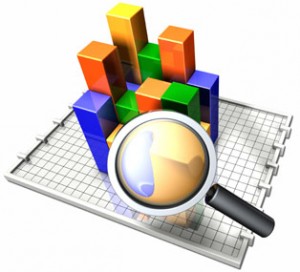
Mathematics Faculty Member, American Public University
Statistics is a form of applied mathematics. Researchers across all disciplines use statistics to analyze their results. Teachers use statistics when they administer, score, and interpret test results. In fact, statistics are used in just about every corner of life– weather forecasts, political opinion polls, crop yields, business trends, medical diagnoses, and more. With such diverse applications, it is not unusual for colleges to offer several statistic classes; departments of psychology, sociology, education, mathematics, business, and biology often offer specialized statistics courses.
Why Statistics?
Statistics is a basic tool of analysis, and one must be familiar with statistical concepts in order to understand analytical efforts. Work in many professions requires individuals to evaluate existing analyses and also to design and conduct some kind of study.
Statistics provide efficient and precise ways of describing real world phenomena resulting from the collection of “good data”. The processes of collecting, organizing, analyzing, interpreting, and most importantly presentation of results provide organizations the information to “do what they do” efficiently and effectively. Statistical methods also provide information that tells how much, how many, how often, how extreme, or how common something is and provide the backdrop in decision making.
Statistics Applied
Specific conclusions can be drawn with statistics by determining how much confidence we have in our results, or how much estimated error we have allowed in our conclusions. Knowing this allows us to forecast events, given specified conditions. For example, a management analyst reports that 60 percent of his sample plans to take course X. He estimates his margin of error to be + 5 percent. Thus, he predicts that if the course were offered, anywhere from 55 to 65 percent of the sample would take course X. That statement is precise and exact. If we had to rely on words alone without reference to numbers, the exact meaning would be lost. For example, “a majority of people plan to take course X,” is a prediction that may be slightly wrong.
Statistics inform us about the relationship between two or more events. To what extent is IQ related to grades? Is there a correlation between watching violence on TV and carrying out a violent act?
Finally, statistical tools enable researchers to decipher conditions that cause another event to happen. What people do is one thing; why they do it is much more complex. Frequently, the performance of one class in school will far exceed the performance of another class taught by the same instructor. Why? Is it the difference the classroom, different abilities of students, or the students’ motivations? Careful experimental design and statistical analysis can help determine causal factors from very complex behavior.
About the Author:
Michael D. Miner is an Assistant Professor of Mathematics in the School of Science and Technology. He is a retired Army officer and holds a Bachelor of Science degree in Mathematics and Economics and Masters Degrees in Business Administration and in Applied Mathematics. He has more than 22 years of instructing undergraduate students in college mathematics, statistics, and critical thinking.
Comments are closed.